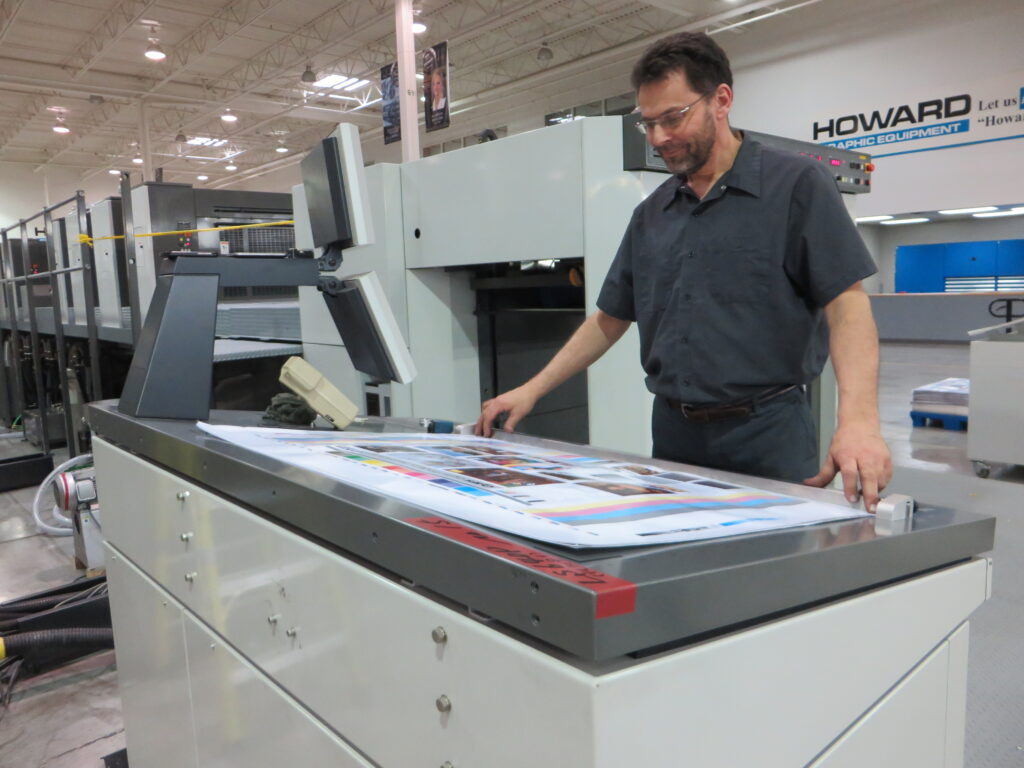
Features
Chronicle
Opinion
Wide Format Week
Where have all the workers gone?
Altering the poor perception young adults have of our industry may help address the talent crisis
August 25, 2023 By Nick Howard
 An operator runs an offset press. Photo © Nick Howard
An operator runs an offset press. Photo © Nick Howard We all know the print sector is undergoing significant changes as society transitions to alternative forms of communication. Market declines have led to shortages of materials. Many mills are shuttering or transitioning to more lucrative materials like paperboard. We no longer have a vast array of paper types to choose from. This lack of choice and the inevitable higher costs are inhibiting growth.
Since Henry Ford’s time, companies have argued over how best to attract young people, but with meagre results. Once powerful organizations, such as trade unions and the Craftsman, are distant memories. We are too busy trying to keep our ships afloat, so we don’t have time to agree and fund a plan. Apprenticeships may have worked decades ago, certainly in Europe, but in North America, we graduated employees from sweeping floors to running presses.
‘Let the cream rise to the top’ was our form of labour capture. This may have worked in the past, but better incentives are needed now.
Different skillsets
Today, skill levels differ with new print technologies. The in-depth knowledge and experience needed in 1960 aren’t required in the digital age. With recent changes, along with the general public’s opinions of what we do, we often find hiring people to become non-skilled servants of a large inkjet printer—heaving large sheets onto a table and taking them off. This drives them away to seek something with more of a future in an industry offering better prospects. Still, we have positions to fill, and although remuneration has increased, we can’t seem to attract talented people.
Previously, governments attempted to build proper apprenticeship programs. Those failed because schools tended to look forward to the needs of printers by looking back in time. Secondary schools and trade colleges that should have kept current ran antiquated courses on print. Students ended up graduating with the same knowledge Gutenberg used to print his 1450 Bible. Isn’t it ironic an industry that owned the ability to communicate finds it hard to benefit from its own tools?
Some post-secondary colleges and universities may have taken an equally misguided approach, giving up on essential, practical machine skills and instead focusing on print management. All exciting, perhaps, but what is needed now is more practical skill learning. Look at most inkjet production equipment; only some are well cared for. In almost all cases, the piezo heads are poorly maintained, as it’s better to replace a head than clean it. The same holds for offset presses. How often do we see poor-quality, washed-out colour and incorrect densities on relatively new machines equipped with in-press tools to correct and maintain colour? Isn’t it ironic how we complain about finding talent, yet accept the costs of re-running a lousy job?
Better marketing
The solution may reside in us marketing what we do as exciting, relevant and financially rewarding. We can start by removing negative obstacles, particularly the perception that print has no future. If some ‘printers’ and industry pundits spent the effort used on promoting themselves on encouraging workers and new hires, perhaps more quality applicants would take notice. Pay the key people better. Focus on engaging a company’s most important asset: people.
With print technologies changing, we must attract more workers to join our ranks. It’s never been as easy as it is now for a young person without print skills to enter the workforce. Methods and machinery have never been as simple to learn or as effortless to operate. Institutions and private enterprises must help rally support for logical training plans and foster much-needed encouragement for young people who thought printing was what their grandfather did.
Nick Howard, a partner in Howard Graphic Equipment and Howard Iron Works, is a printing historian, consultant and Certified Appraiser of capital equipment. Contact him at nick@howardgraphicequipment.com.
This article originally appeared in the July/August 2023 issue of PrintAction.
Print this page